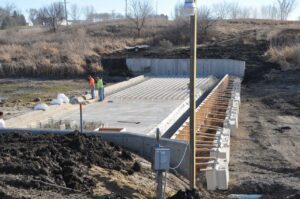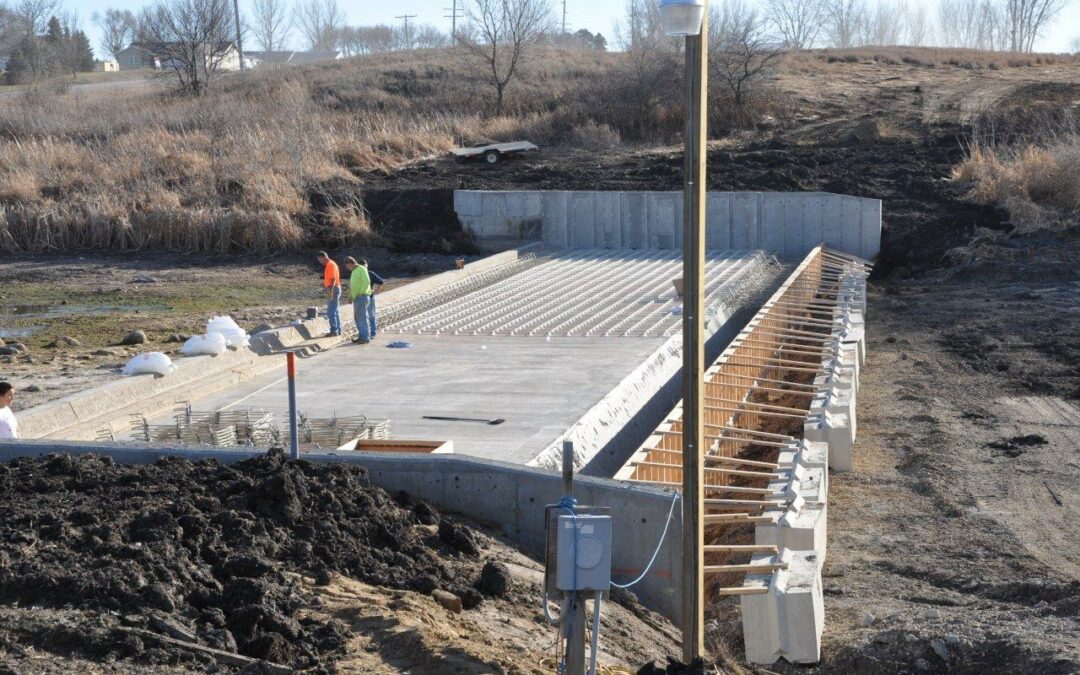
Last fall the lakes area was jolted awake by reports that Asian carp were found in East Okoboji and Spirit Lake. Both bighead and silver Asian carp were found, with the silver carp carrying the reputation as the “jumping fish”. After several meetings with the Iowa Department of Natural Resources Fisheries Bureau the lakes community determined the best solution was to install an electric fish barrier at the Lower Gar Outlet. With only sketchy details available at that time the cost was estimated at $700,000. Neil Conover and Phil Petersen were recruited as the fund raising co-chairman.
During the winter and early spring a major fund raising effort was underway in the lakes community. More than $400K came from the lakes community and the Iowa DNR contributed $300K to the cause. Major contributions came from the Okoboji Protective Association, AWC Family Foundation, the Okoboji Foundation, Dickinson County, Okoboji Tourism Committee, Spirit Lake Protective Association, and East Okoboji Lakes Improvement Corporation. The seven communities with lakeshore property (Arnolds Park, Milford, Okoboji, Orleans, Spirit Lake, Wahpeton, and West Okoboji) all contributed $10K each. Other contributors included: Parks Marina, Taxpayers Association, and the local fishing clubs.
By April the $700,000 was raised, but it wasn’t known if that would be sufficient to cover the cost? With a substantial part of the funding in place the DNR proceeded with plans to design and build the electric fish barrier. By July a design contract for $118K was in place with Smith-Root of Vancouver, WA – the designer of most of the electric fish barriers in the United States. In September the low bid construction contract for $843K was awarded to Christensen Construction of Estherville. Good weather and low water levels have allowed construction to proceed very quickly. The major part of the construction is completed with the final touches to be in place by the end of December.
The total cost for the Electric Fish Barrier now stands at $961K, exceeding the early estimate by $261K. Because several Minnesota lakes are directly connected or within the IGL watershed, the Minnesota DNR believes there is considerable benefit for their state with the barrier construction. They have agreed to supply the missing $261K. It is time that financial commitments made to this critical project are transferred to the Iowa DNR to pay the contractor.
With the electric fish barrier in place, Asian Carp will no longer be able to swim their way into the Iowa Great Lakes during high water events. Hopefully, as the lake levels receded this fall, the few Asian Carp that remain decided to swim out of the lakes back towards the Missouri River. It is not expected any remaining Asian Carp will reproduce in our lakes, so it appears we might have successfully dodged a serious threat to our lakes.

